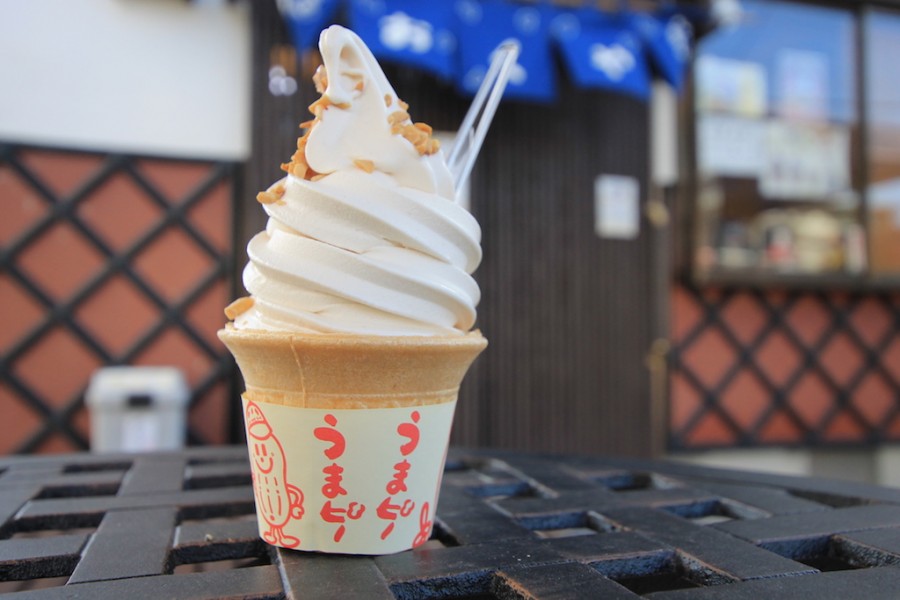
Okuya Peanut Factory
This shop uses Aizu-grown peanuts in their delicious confectionery sweets. There’s a sampling corner for you to try their creations. Our top recommendation is the peanut soft-serve ice cream!
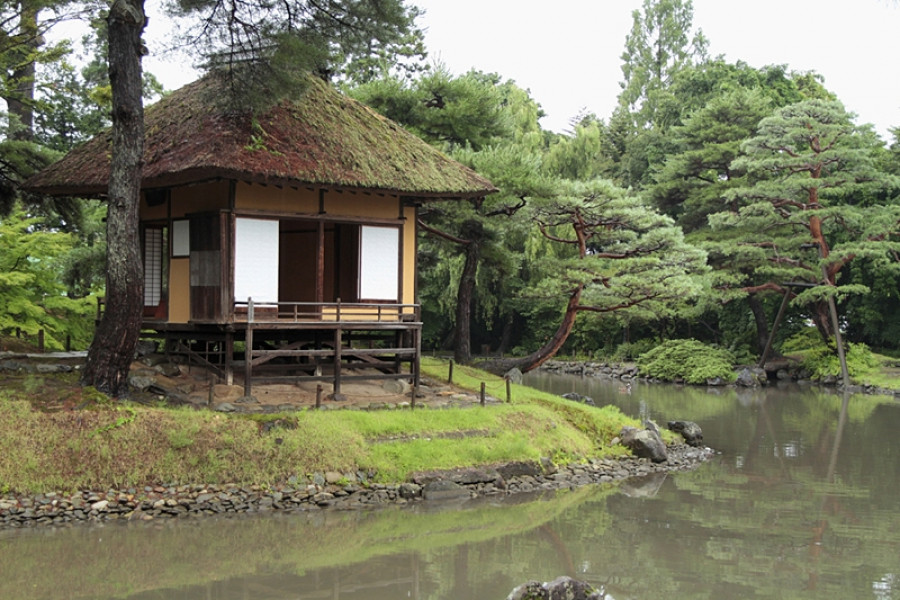
Oyakuen was used approximately 600 years ago as a villa for the then lord of the Aizu Domain. Subsequently, in the mid-17th century, the lord of the Aizu Domain started growing medicinal herbs within the grounds which he developed to protect the citizenry from epidemics. This lead to the garden gaining the name "Oyakuen", which literally means "medicinal garden."
The traditional garden has been preserved as it was long ago, and Oyakuen has now been designated as an important national asset. The buildings within the grounds were used by the lord as a place of relaxation and for entertainment. Accordingly, Oyakuen still contains buildings devoted to Japanese tea. Visitors can enjoy a cup of herbal tea here even today.
| Website | https://aizuwakamatsu.mylocal.jp/en/trip/spot-list/-/spotdetail/spotinfo/1000000066/3999496 |
|---|---|
| Contact | Oyakuen Garden (+81) 242-27-2472 info@tsurugajo.com |
| Best Season | All Year |
| Opening Hours | 8:30 AM - 5:00 PM (Last entrance at 4:30 PM) Open all year |
| Parking | Free (61 cars) |
| Entrance Fee | Adults: 330 yen High school students: 270 yen Junior high and elementary school students: 160 yen |
| Related info | Enjoy seasonal views of Oyakuen Garden throughout the year. Recommended photo spot: The view of the garden from the tea house |
| Access | 8-1 Hanaharumachi, Aizu-Wakamatsu City, Fukushima Pref. 965-0804 View directions |
|---|---|
| Getting there | By Car: 15 min drive from the Aizu-Wakamatsu I.C. exit off the Ban-etsu Expressway By Bus: Take the Haikara-san or Akabe sightseeing loop bus from Aizuwakamatsu Station (JR Ban-etsu West Line) and get off at Oyakuen Bus Stop. From there, walk for 3 min. The gardens are a 15 min walk from Tsurugajo Castle |

This shop uses Aizu-grown peanuts in their delicious confectionery sweets. There’s a sampling corner for you to try their creations. Our top recommendation is the peanut soft-serve ice cream!

Only a one-minute walk north of Kawageta Station (JR Ban-etsu West Line) is this beautiful 1 km-path along the banks of the Kannonji-gawa River. In the spring the path transforms into a spectacular tunnel of Yoshino cherry trees and weeping cherry trees. Kannonji-gawa River is perhaps the most fantastic place to see cherry blossoms in Fukushima Prefecture; the calming river and the lovely petals falling like snow are a sight that can’t be beat. The lush green bank contrasting with the pale pink blossoms creates an unforgettable scene. Altogether there are about 200 trees growing along the Kannonji-gawa River on both banks. Additionally, the river maintains its natural curves and bends as it hasn’t undergone any work to adapt its shape to the city surrounding it. It’s one of Fukushima’s most splendid and respected natural landscapes. Currently, the Kannonji-gawa River cherry trees rank number 11 of the best places to see cherry blossoms in the entire Tohoku region! While enjoying the delicate blossoms and the sweet, fresh air, visitors to Kannonji-gawa River can also enjoy some of the tasty food from street vendors available only during the cherry blossom season. We’d really recommend a springtime picnic right on the river bank with various yatai (food stand) delicacies. Be sure to come back during the evening when the trees are illuminated, and the river transforms into a magical dreamscape.
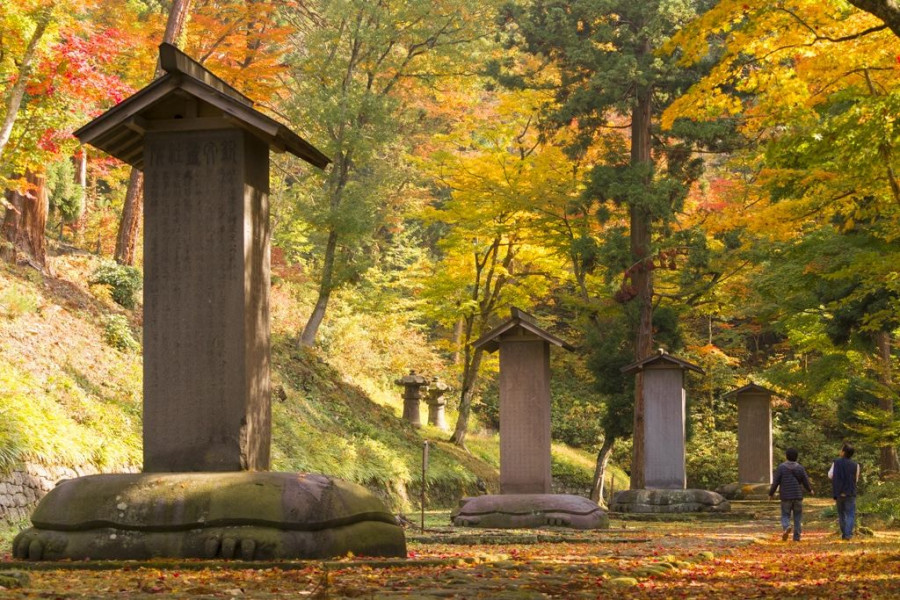
The gravesite was constructed in 1657 when Masayori, the heir of the first Aizu lord Hoshina Masayuki, passed away. Tombs for the second lord Masatsune through the ninth lord Takamori, as well as their wives and children, stand side by side. A Buddhist funeral was conducted for the second lord, but the Shinto style was used for all the other lords. This gravesite is one of Japan’s top daimyo family graves, and is known for its history and scale. The Grave of the Matsudaira Family has also been nationally recognized as an Important Historic Site.
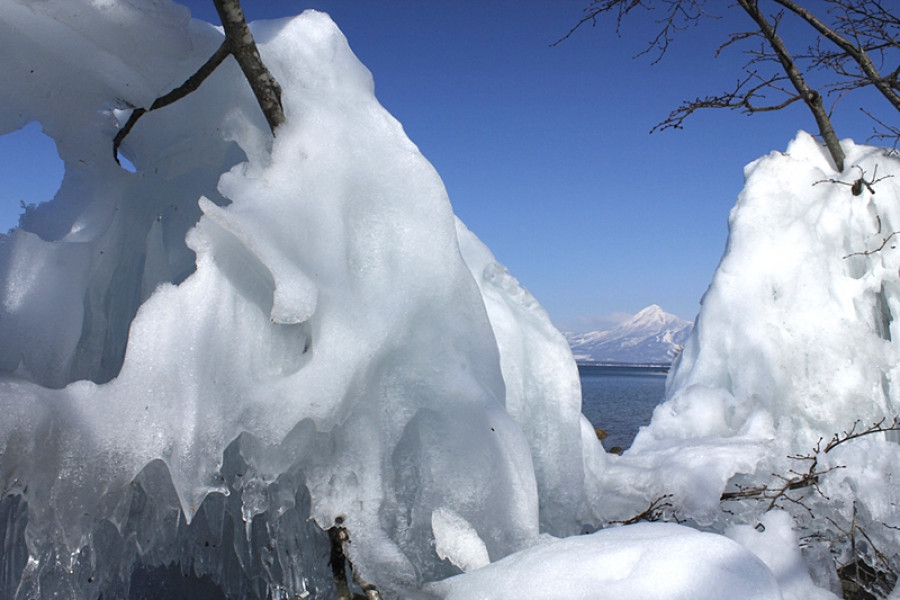
If you head to Tenjinhama beach on Lake Inawashiro in the depths of winter, through the trees at its south towards the mouth of the Nagase river, you will see the "shibuki-gori" natural ice sculptures. Lake water is picked up by strong winds from the west, and meets the trees on the coastline. There it creates a very unusual phenomenon with a beauty that rivals the "juhyo" (ice-covered trees) seen at the tops of mountains. Local peoples and visitors alike never tire of these sights. You can also see other shapes formed by ice here, such as ice drifts and the prominent "Omiwatari" cracked, rising ice on the beach and lake surface. Please note that Shibuki-gori are natural ice sculptures, and therefore their appearance and size change by the day. Please check before visiting.
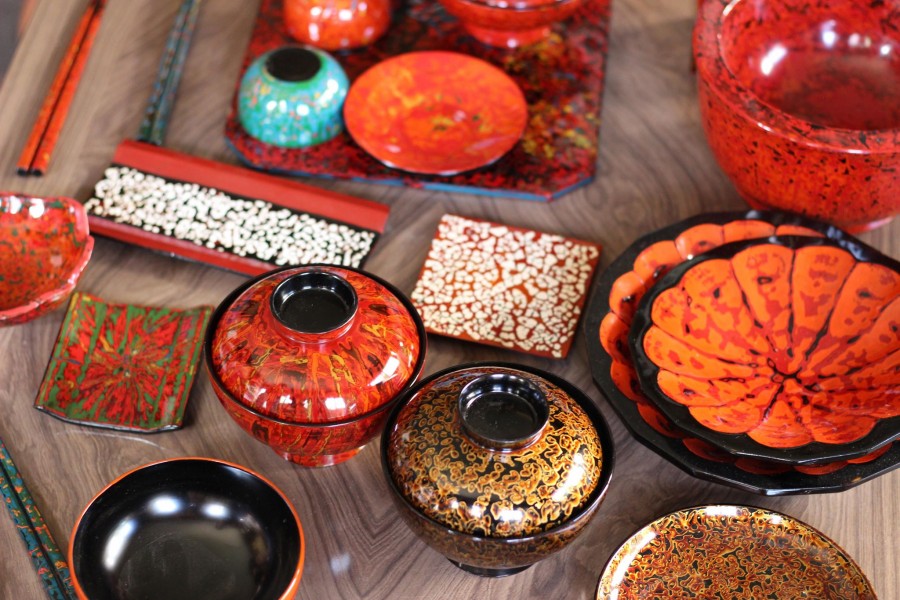
Aizu Urushi Lacquerware has a very long history – predating lacquerware from Wajima or Tsushima. Aizu Lacquerware was originally produced in areas of Aizu that experience very heavy annual snowfall. The industry began to boom about 400 years ago - this development was initiated by feudal lord Gamo Ujisato’s endorsement of Aizu Lacquerware.From then onwards, techniques used in the production of Aizu Lacquerware were refined and Aizu Lacquerware became very famous in Japan. You can make your paint your own design onto Aizu Lacquerware items, or even try painting with lacquer, in Aizu region.Makie Painting Experience WorkshopsSuzuzen (Aizu-Wakamatsu City) From 1,900 yen Page on Fukushima.Travel Website Suzutake (Aizu-Wakamatsu City) From 1,000 yen Must book in advance Page on Fukushima.Travel Website (Japanese)Bansho (Aizu-Wakamatsu City) From 1,200 yen Irregular opening hours in winter Website (Japanese)Fukubun (Aizu-Wakamatsu City) From 1,600 yen Irregular opening hours Must book in advance Website (Japanese)Shitsugei Tsunoda (Urabandai Area) From 1,000 yen They also have an experience where you can paint with real lacquer (From 10,000 yen) Must book in advance Website (Japanese)
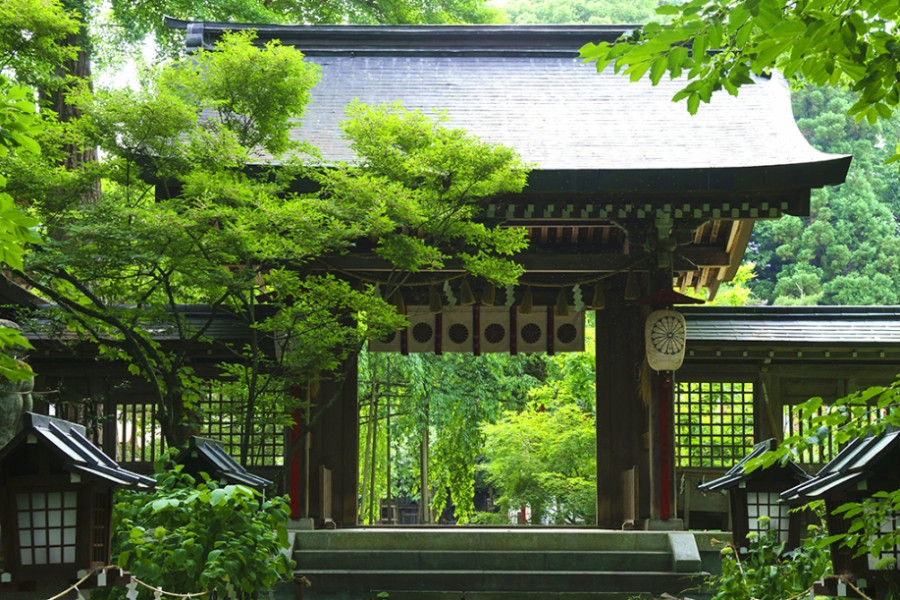
Isasumi Shrine's history is thought to be connected to how the Aizu region got its name - a story that has been recorded in two of Japan’s most legendary books of folklore. According to the tale, around 2000 years ago, four shogun were entrusted with uniting the four areas of land which would become Japan. Two of these shogun happened to be father and son. One was sent to the northeast, and the other to the northwest.When the father and son had completed their work uniting the towns in their respective areas, they met in the middle. They named the area “Aizu” (会津), which can be translated as “The riverbank (津) where we met (会)”. The father and son travelled to Mt. Mikagura-dake, a mountain that borders Niigata Prefecture and Aizu, and prayed to the Shinto god of pioneering new lands to protect Aizu, and the rest of Japan. Isasumi Shrine is thought to be built where they met.In spring, the shrine grounds become decorated with the blossoms of one of the most prized cherry trees in Aizu. It is said that this tree, which is named Usuzumi Sakura (“Diluted-Ink Sakura”), has been the sacred tree of Isasumi Shrine since it was brought down from Mt. Mikagura-dake and planted in the shrine grounds as a way of commemorating the efforts of the father and son. The lovely, light scent of the cherry blossom welcomes visitors each spring.Aizu Misato Town’s historic Isasumi Shrine, known as a great spot for viewing beautiful irises, holds a festival to celebrate the splendor of these flowers every year.
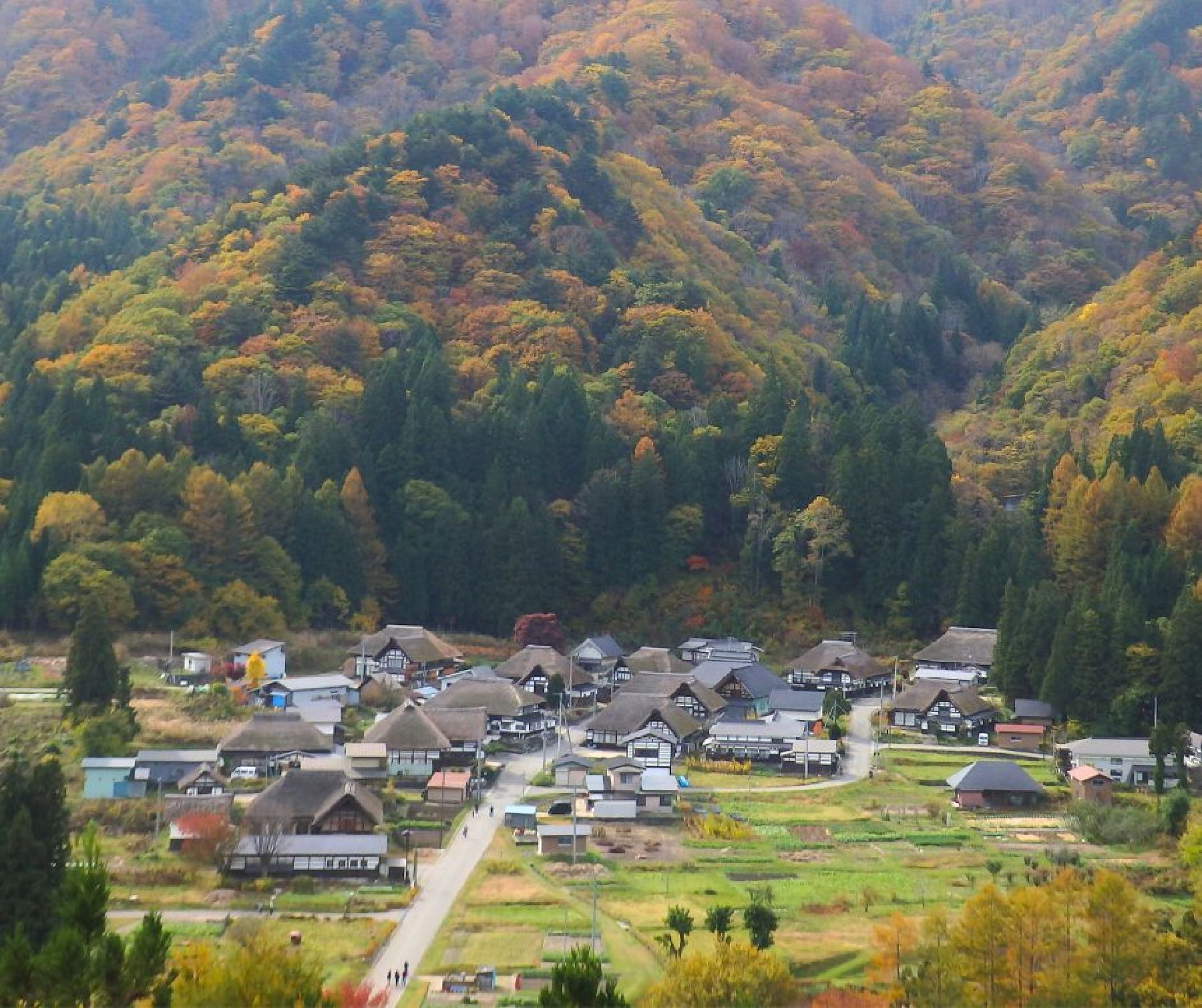
The deep snows of the Aizu region meant that, in the past, cut off from other areas for months at a time, its residents had to use all their wits just to make it through the winters. These L-shaped farmhouses known as "magariya" conceal a number of the innovations developed by this local people.As you can see in the layout of the house, the long earth floor stretches out towards the road. Long ago, horses were indispensable in farming, but the deep snow of winter meant that keeping them tied up in external stables was cruel. Therefore, stables were built into the house, meaning that the unfloored working area inevitably became larger. Having this area far from the road made getting to the road through the snow more difficult, as up to a meter can fall overnight. Accordingly, with the aim of reducing work, locating this working area as close as feasible to the road ended up with the house being laid out in an L-shape.Many of these houses were built in Maezawa and throughout Tateiwa Village, as a way of living with horses in the deep snows of the Aizu region.The houses have become more and more comfortable over time, with the "magariya" design lasting until the present day. While this magariya-style farmhouse used to be built everywhere that saw heavy snow, they are gradually disappearing. Accordingly, the Maezawa magariya have been designated as historical cultural assets.In 1985, the village began actively preserving these houses, and this area now attracts many visitors. One of the magariya buildings have been repurposed into a museum in the village where visitors can learn about life in Maezawa.
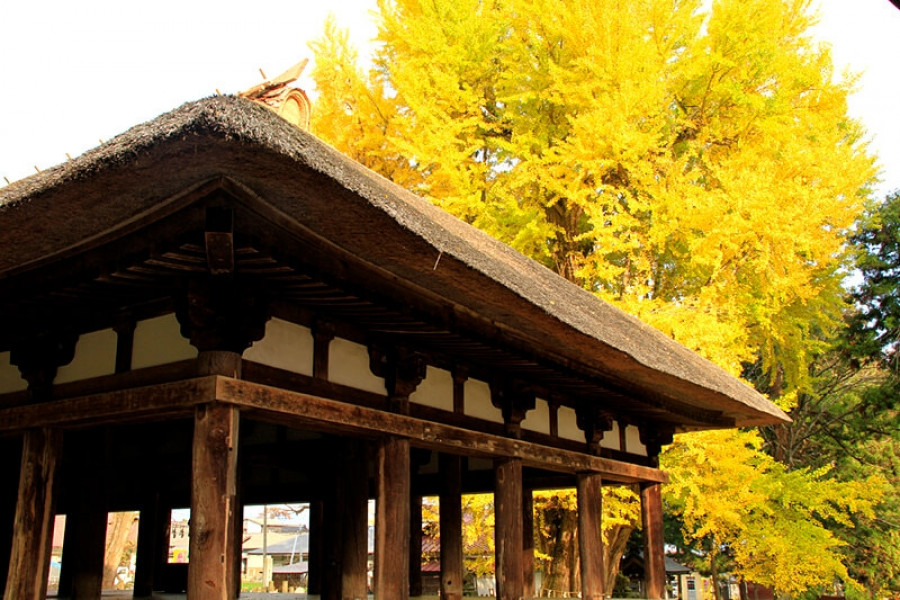
Built in 1055, the Nagatoko is Shingu Kumano Shrine's worship hall and translates to “long floor”. It is designated as a Nationally Important Cultural Asset. Its thatched roof main structure was built between the Heian period and the Kamakura period and is supported by 44 massive pillars, each one 45 cm in diameter. It is a large, open stage with no walls, said to have been used for ascetic training by priests, as well as kagura dance festivals. Housed inside a nearby large wooden frame is the shrine bell, which visitors to the shrine are welcome to hit with a wooden rod. There is also a famous copper pot in which, allegedly, rice was rinsed before being offered to the gods; the pot was designated as an Important Cultural Property in 1959. This treasure is housed at the shrine along with many others and is on display for visitors along with national and prefectural designated cultural assets. Also not to be missed is the lion statue in the center of the treasure hall. It is known as a guardian of wisdom: a local legend says that if you can pass under the belly of the lion, your wisdom will blossom. It is a popular place for students to visit before the exam season and even politicians before election season. Come autumn, the magnificent 800-year-old ginkgo tree at the site is bathed in yellow, contrasting beautifully with the Nagatoko. This ancient tree has also been designated as a Natural Monument of Kitakata City. In November each year, you can even see a special illumination of the ginkgo tree for a limited time.